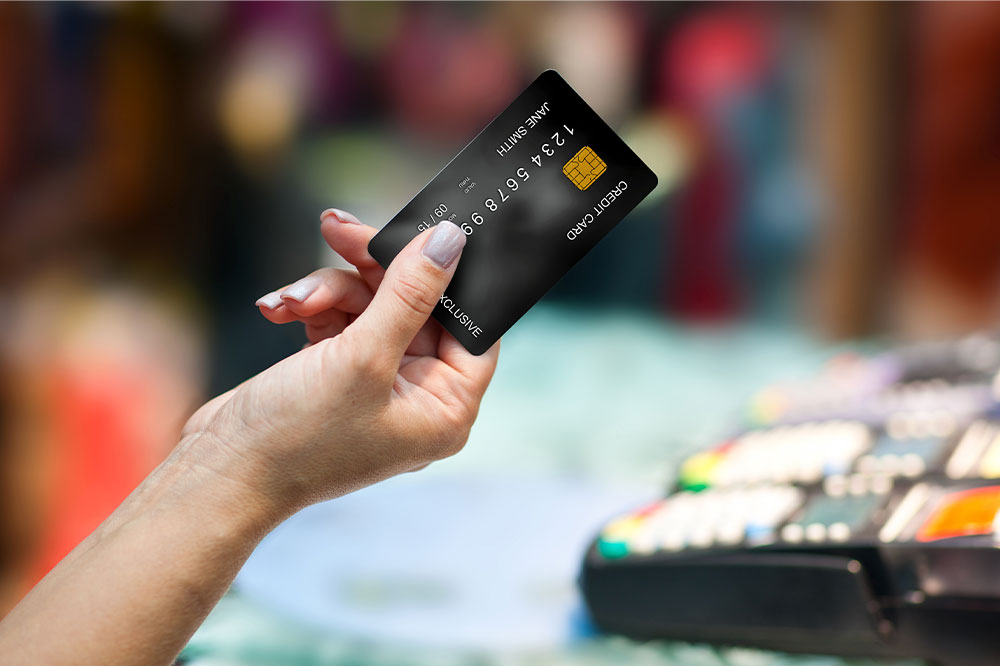10 Important tips to keep in mind while using credit cards

Credit cards provide financial independence by allowing people to pay for their needs anytime. These cards can assist in maximizing points and rewards for each purchase. The points and coupons can be used for future purchases, resulting in significant savings. With all the benefits, one should remember to handle it cautiously, or one may find themselves in challenging financial situations. Here are ten crucial credit card tips that everyone should keep in mind.
Maintain a low credit utilization ratio
Remember to keep your card’s balance at or below 30% of the available credit. Carrying large balances on all your cards may harm your credit score. Furthermore, your interest expense grows if you carry these large balances from month to month. Therefore, work to maintain the lowest credit usage ratio possible. Making payments earlier in the month, before your billing cycle ends, might help raise one’s credit scores and lower interest costs.
Paying off the entire balance monthly
The best way to avoid unexpected costs is to pay off your entire balance by the end of each billing cycle. These monthly balances carried over to the next billing cycle may result in high-interest charges. When the balance increases, getting out of debt will be more difficult, which could be bad for one’s financial health. Finding a business credit card with a low ongoing annual percentage rate (APR) can help you save money on credit. Cards with low APRs can be ideal if you can manage expenses.
Avoid late payments
While it’s ideal to pay off your entire balance each month, if that isn’t possible, make sure to pay the minimum payment by the due date. Even a delay of a few days can result in you paying late fees to your issuer. Late payments of more than 30 days can affect your credit score. This late payment record will stay on your credit report for around seven years. Set up autopay and phone reminders or schedule early payments to ensure payments are made on time or early. Contact the credit card company and notify them in case of any late payments. In some cases, this can even help you extend your deadline.
Using spending analysis tools
Most issuers offer spending analysis tools that you can use from your online account. For example, you can keep an eye on your spending by selecting a date range, a month, a year, or a specific term. In addition, it presents all your spending information in various categories. These tools can give you a financial overview and warn about areas where you can reduce your spending to improve your situation.
Take advantage of bonus malls and offers
If you frequently make purchases online, see if you can maximize your rewards by utilizing the bonus mall or card-linked offers from your card issuer. Doing this will help you get around 10% rebate on a purchase rather than the usual 1% to 2%. Alternatively, you could get an immediate refund of $5, $10, or more. Some credit card issuers market these choices more aggressively than others. Visit the website or app of your issuer to learn more about the offerings and how you can use them.
Staying away from cash advances
Even though most businesses let you use your card to make purchases or withdraw cash from an ATM, cash advances are significantly more expensive than standard card purchases. Usually, they start at $5; however, some issuers go even higher. Therefore, whether you pay the advance right now or in the next cycle, this will be charged to your transaction immediately. Therefore, frequently withdrawing money with your credit card is not a good idea unless you need cash for a business emergency.
Use balance alerts
Cash payments make you think twice about your spending as money physically disappears from your wallet. However, in the case of card transactions, it’s easy to go overboard with spending. To tackle this, many issuers let users set up balance alerts via SMS, email, or in-app messages to notify them when their preset limit is reached. It helps a person to spend wisely and remain on budget.
Prioritize paying off high-interest credit cards
Credit card debt with high interest rates is considered bad debt and must be removed from the record soon. Planning and establishing a time frame can help you approach this issue strategically. Initially, paying off high-interest debt while only making minimum payments on other debts will help you get back on track.
Check for joining and renewal fees
Most cards have joining and renewal fees. Provide close attention to the fee schedule and only choose a card with reasonable fees compared to the rewards it offers. Some issuers will reverse your fees if you spend more than a certain amount yearly. This perk can help you save money on annual fees.
Using credit cards for just big purchases
Small purchases using credit cards can add up to large sums over time and go unnoticed. Therefore, it is best to use this service for large purchases that you can easily track and pay for at the end to avoid surprises. Using credit cards responsibly can help you build a company credit history, improve your credit scores, and access more credit limits and other financing choices in the future.
Some treatment options like Cibinqo are supported by copay savings cards that patients can use to get prescriptions for as little as $0. Offered by the Dermatology Patient Access program by Pfizer, these credit cards are meant to encourage healthcare savings which may go up to $15,000 per calendar year for Cibinqo.






